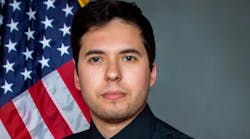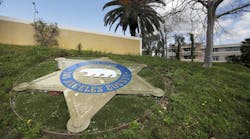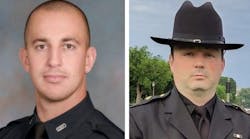SANFORD, Fla. -- Jurors in the George Zimmerman trial saw photos of 17-year-old Trayvon Martin's body today during dramatic police testimony about the night of his shooting.
The most recent witness called by the state, Zimmerman neighbor Selene Bahadoor, said she heard noises and what sounded like running on the night of the shooting, and looked out her sliding glass door.
She said she saw two people, standing, but couldn't identify them. She described what she saw as "figures and arms flailing."
Later, Bahadoor said she heard the gunshot, returned to the door and saw a "body in the grass... I remember it being face down."
Defense attorney Mark O'Mara grilled Bahadoor on whether she'd changed her testimony. She testified today that she thought the running moved from left to right outside her back door, and O'Mara asked her if she initially told Sanford police that.
"I don't know, I can't remember," Bahadoor said, later adding that it's possible today was the first time she mentioned it in an official statement. She was shown transcripts of her prior statements and said she mentioned the running, but not the direction.
The first state witness called this afternoon was Sanford police Sgt. Anthony Raimondo, one of the first officers to arrive at the scene after the shooting.
Raimondo described arriving at the scene: He saw Zimmerman in handcuffs, and another officer standing over Trayvon, who was face down in the grass.
"I attempted to get his pulse," but there was none, Raimondo said, adding that he also performed CPR. "I breathed for Mr. Martin... I tried to, sir."
Jurors were also shown photos of Trayvon's body. The teen's father, Tracy Martin, left the courtroom as the photos were displayed. One photo was a close-up image of the bullet hole in Trayvon's chest.
After Raimondo testified, the state called Diana Smith, a crime scene technician for Sanford police, who described documenting evidence from the shooting scene.
Smith took the jurors through a diagram of the shooting scene, and then showed them pieces of evidence she collected, including items Trayvon was carrying: Skittles, an Arizona soft drink, a red lighter, his cell phone and a pair of ear-bud headphones.
Later in Smith's testimony, the jury saw photos of Zimmerman's face and head, some of which showed cuts and blood. The jury also saw Zimmerman's clothes and his gun.
Smith said she searched around the shooting scene for blood, including the sidewalk where Zimmerman says Trayvon bashed his head into the concrete, but didn't find any. On cross examination, she said the search was thorough, but acknowledged it was raining.
This morning, jurors heard testimony from Wendy Dorival of the Sanford Police Department, who oversaw the Neighborhood Watch program Zimmerman coordinated.
She said Neighborhood Watch volunteers shouldn't follow suspicious people: They're told "don't do that. That's the job of law enforcement," she said.
On cross-examination, Dorival said that Zimmerman was helpful in raising awareness about the program. She also said that burglaries were the "number one concern for most of the residents" in the Retreat at Twin Lakes, where Zimmerman lived.
Crime data Dorival reviewed showed that concern was legitimate, she said, adding that volunteers are encouraged to keep an eye out for suspicious people and report them, but not to "take matters into their own hands."
After Dorival, the state called Donald O'Brien, the president of the homeowners association for Retreat at Twin Lakes. He said residents were told to report suspicious behavior, but to "stay away, (and) call the police."
Of the Neighborhood Watch program, O'Brien said: "I don't think we needed it." He said it was Zimmerman idea to start the program, not the HOA's.
Neither side brought up during O'Brien's testimony the $1 million-plus settlement Trayvon's parents reached with the homeowners association. The exact dollar amount of the settlement has not yet been revealed.
Earlier, the state called Ramona Rumph, of the Seminole County Sheriff's Office communications department, to authenticate the 911 calls made by Zimmerman neighbors on the night of the shooting.
Before testimony resumed, Circuit Judge Debra Nelson heard argument this morning on whether prosecutors can play for the jury Zimmerman's calls to police to report suspicious people in the months before the Feb. 26, 2012, shooting.
Prosecutors argue those calls demonstrate Zimmerman's state of mind when he reported Trayvon as suspicious minutes before he shot the teen. The defense says the past calls are irrelevant.
Prosecutor Richard Mantei said the calls demonstrate Zimmerman's prior "profiling," and will give jurors context on a "building level of frustration this defendant had" with the suspicious people he reported to police getting away.
Defense attorney Mark O'Mara countered that the state is trying to use the calls as examples of prior bad acts by Zimmerman, though the defense lawyer called them "good acts." He said the state is putting Zimmerman's character on trial: "They can stay state of mind, but it's character."
The judge did not rule immediately after hearing argument. She did listen to the calls, in which Zimmerman reports other male African Americans he viewed as suspicious to police for various reasons. The calls took place between August 2011 and February 2012.
In the calls, Zimmerman uses phrases similar to those he used in reporting Trayvon to police before the shooting: "They typically run away quickly," he says in one call, referring to two men he said matched the description of suspects in a recent burglary.
Of another person he said he saw repeatedly approaching a house, Zimmerman said I "don't know what his deal is." He said the same of Trayvon.
The six jurors and four alternates seated last week heard opening arguments Monday, and then testimony began: Jurors heard from a police dispatcher, a 7-Eleven clerk and a teenager who was with Trayvon the day he was killed.
Prosecutor John Guy began his opening statement Monday with profanity: "F---ing punks," words he said Zimmerman used under his breath during his non-emergency call to report Trayvon to police before the shooting.
When Zimmerman saw Trayvon, the prosecutor said, he "profiled him as someone who was about to commit a crime in his neighborhood, and then he acted on it, and that's why we're here."
After Guy's brief, emotional opening, defense attorney Don West put on a lengthy, methodical statement. Zimmerman, West told jurors, "shot Trayvon Martin in self-defense after being viciously attacked."
West into a detailed chronological breakdown of Zimmerman's call to Sanford police, which the jurors heard multiple times Monday. It was Trayvon who confronted Zimmerman, not the other way around, West said.
The trial will be closely watched across the nation. When Sanford police didn't arrest Zimmerman after the shooting, citing his self-defense claim, it prompted widespread civil-rights protests, in Sanford and across the globe.
Zimmerman, 29, was later charged by a special prosecutor. He faces up to life in prison if convicted as charged.
Copyright 2013 - Orlando Sentinel
McClatchy-Tribune News Service


